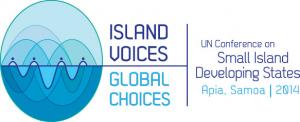Vanuatu NGO Climate Change Adaptation Program
Oxfam
#SDGAction40084
Description
In implementing the strategies outlined in the description above, a shared approach to resilience is underpinned by the 'Vanuatu Community Resilience Framework'. It breaks down the goal of supporting communities to build their resilience into a set of enabling characteristics at the community level. This assumes that working towards this set of characteristics supports communities to deal with shocks and stresses and adapt to uncertain futures.A resilient community in Vanuatu (summary):1. Has their basic needs met2. Can build their livelihoods on a diverse range of material assets3. Has fair, inclusive and responsive leadership and decision making processes 4. Can access and use relevant traditional and external information5. Has the ability to innovate and take risks6. Has a belief system and culture that can help understand and act on shocks and changes7. Has strong social networks, both internal and external to the community8. Has connected and responsive governments at different levelsEquity between women, men, girls, boys and people with disability central to the achievement of each feature of the resilience framework, as inequality constrains resilience.This framework is being piloted in the design, implementation, monitoring, learning and adapting stages of the program. While all consortium agencies have different approaches to resilience programming, the framework provides coherence in working towards a common definition of impact. This approach has increased the program's focus on community participation, voice and access to information, which helps communities to become more resilient.The Vanuatu program is currently using the resilience framework to support communities to increase their resilience to climate change. However, the framework has the potential as a tool to promote greater integration of DRR, CCA and development.
Demonstrating that collaboration is more effective than working in isolation, consortium agencies have supported each other through the sharing of technical expertise, tools and approaches in community based adaptation.
The Program supports two primary coordination mechanisms for the partnership:- The Consortium Management Group, which meets monthly and sets the strategic direction for the partnership- The Vanuatu Climate Adaptation Network, which facilitates coordination among the consortium agencies, other NGOs, the Vanuatu Humanitarian Team (VHT), and other resilience stakeholders. VCAN is also represented on the Government of Vanuatu's National Advisory Board for Climate Change and DRR.
CARE International in Vanuatu
Save the Children
Vanuatu Red Cross Society
Vanuatu Rural Development Training Centres Association
SPC/GIZ
Vanautu Humanitarian Team (VHT)
Vanuatu Climate Adaptation Network (VCAN)
Australian Government
SDGS & Targets
Goal 13
Take urgent action to combat climate change and its impacts
13.1
Strengthen resilience and adaptive capacity to climate-related hazards and natural disasters in all countries
13.1.1
Number of deaths, missing persons and directly affected persons attributed to disasters per 100,000 population
13.1.2
Number of countries that adopt and implement national disaster risk reduction strategies in line with the Sendai Framework for Disaster Risk Reduction 2015–2030
13.1.3
Proportion of local governments that adopt and implement local disaster risk reduction strategies in line with national disaster risk reduction strategies
13.2
Integrate climate change measures into national policies, strategies and planning
13.2.1
Number of countries with nationally determined contributions, long-term strategies, national adaptation plans and adaptation communications, as reported to the secretariat of the United Nations Framework Convention on Climate Change
13.2.2
Total greenhouse gas emissions per year
13.3
Improve education, awareness-raising and human and institutional capacity on climate change mitigation, adaptation, impact reduction and early warning
13.3.1
Extent to which (i) global citizenship education and (ii) education for sustainable development are mainstreamed in (a) national education policies; (b) curricula; (c) teacher education; and (d) student assessment
13.a
Implement the commitment undertaken by developed-country parties to the United Nations Framework Convention on Climate Change to a goal of mobilizing jointly $100 billion annually by 2020 from all sources to address the needs of developing countries in the context of meaningful mitigation actions and transparency on implementation and fully operationalize the Green Climate Fund through its capitalization as soon as possible
13.a.1
Amounts provided and mobilized in United States dollars per year in relation to the continued existing collective mobilization goal of the $100 billion commitment through to 2025
13.b
Promote mechanisms for raising capacity for effective climate change-related planning and management in least developed countries and small island developing States, including focusing on women, youth and local and marginalized communities
13.b.1
Number of least developed countries and small island developing States with nationally determined contributions, long-term strategies, national adaptation plans and adaptation communications, as reported to the secretariat of the United Nations Framework Convention on Climate Change
SDG 14 targets covered
Deliverables & Timeline
Resources mobilized
Partnership Progress
Feedback
Action Network

Timeline
Entity
SDGs
Region
- Asia and Pacific
Website/More information
Countries

Contact Information
Daniel Vorbach, Climate Change Program Manager

